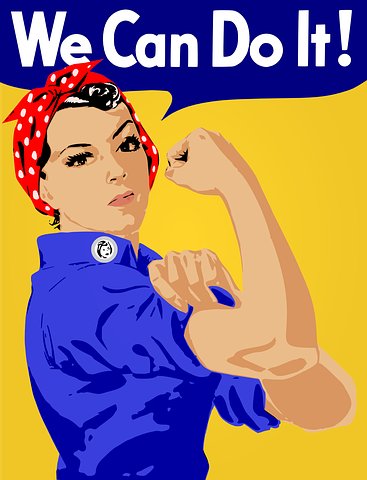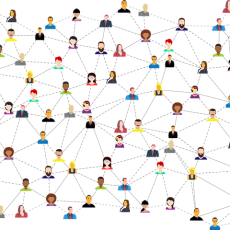
There are two things close to my heart, from a moral and social perspective: climate change and gender equality. I am reticent to say ‘feminism’ due to the sometimes negative connotations that word brings. But let’s be honest – feminism in it’s true definition without any hyperbole, is completely about gender equality and nothing more. The other thing which I’m respectful of is that we must no longer identify as one of only two genders*, so using the word ‘feminism’ is antiquated and sets unreasonable and inaccurate exclusivity. But purely in the interest of word count, I will use the female associated words, (woman, women), but unless I’m referring to statistics, I mean all those who identify as women.
What I want to talk about is the undeniable link between the gender equality movement and that of climate change action, or in fact, the fight for climate justice. The reason we should all start referring to climate action as ‘climate justice’ is because it actually does represent the fight for justice for every living thing on the planet, and indeed the planet itself. Climate change affects populations across the globe in a totally unjust way – the poor are particularly vulnerable, and inarguably affected in a far greater way than the wealthy.

And 70% of the globe’s poorest people are women and children. Although your first thought might be to developing countries in this respect, it is also true in the United States – in 2016, households of single women caring for children had a poverty rate double that of households of single men caring for children; transgender people had poverty rates double the general population; and women of color experienced poverty up to 3 times more than white men. So here is the first way in which climate justice and gender equality movements are linked.
Women are predominantly the world’s caregivers. Be that their role in the family home, looking after children and/or elderly family members, or making up the majority number of paid caregivers in nursing and healthcare related fields. So this means that women will be ‘weighed down’, sometimes quite literally, with ensuring others reach safety in times of emergencies. We know that the frequency of climate related disasters will increase as we plunge deeper into climate change, so women will continue to be the ones left behind. In the 1991 devastating cyclone and flood in Bangladesh, 90% of the victims who perished were women. In the 2004 tsunami in Sumatra, 75% of the dead were women. The reason isn’t purely that they were ensuring others escaped: it is also due to women not being taught to swim; women not receiving the message to evacuate, due to being housebound (yes, on account of those caregiver duties), and boys being given preferential treatment over girls in rescue efforts. The onward impact of the loss of those women, who are majority of time mothers, means that children are then at higher risk of infant mortality; being exploited into trafficking or prostitution; forced to marry during childhood; and have their education neglected. It might be sobering to know that even in wealthy countries, women fall victim to climate disasters more often than men, as happened in the 2003 European heatwave where total excess mortality for women was 75% higher than for men.
After an environmental disaster, there are yet further negative implications for women. Sexual assault, rape, sexual exploitation and domestic violence all often increase in the aftermath. The reason (read: excuse) often provided is that tensions and frustrations are high, sometimes because incomes take a hit, or the pure stress of dealing with the situation and facing the recovery and rebuild. Hurricane Katrina has been studied extensively in this regard.

The lack of education for girls worldwide was highlighted very successfully by incredible activist Malala Yousafzai. But it remains a very serious problem throughout the world, especially, but not exclusively, in developing countries. Sometimes, as was the case for Malala, the decision to limit education for girls is cultural, believing that women belong only in the domestic space; but education for girls is also limited when budgets are tight – if there’s a choice between sending a boy or a girl to school, the boy will usually be sent, because he will very often have the highest earning potential. As reported by the World Economic Forum, of 144 countries who they have data on for The Global Gender Gap report, 82 countries actually increased the gender gap score between 2017 and 2018! So unfortunately there is still good reason to choose a boy to receive education. Of course a lack of education doesn’t refer simply to reading, writing and arithmetic – this lack of education extends to reproductive education and health, and family planning. Which means that set in motion is a vicious cycle: ensuring women are kept in domestic, poorly paid or non-paid work, thereby ensuring their continued place in poverty, and once again lack of education. It also surely impacts on a girl’s self-worth – if she has no sexual or reproductive education, she has no real ability to use the word ‘no’. Opening up a girl to a full education and therefore career choice undoubtedly has positive effects on the global economy. A one percent point increase in female education results in the average GDP increasing by 0.3 percentage points. But this is nothing new – the empowerment of women has long had positive, widespread effects – with the women’s right to vote in America came an immediate increase in spending on public health, and that correlated to a drastic drop in childhood mortality rates. It has been identified that women are at the forefront of climate change activism, understanding climate science, acknowledging the need to implement key climate-friendly actions into their lives, questioning the efficacy of current climate change policies…BUT they remain heavily underrepresented in climate change policy making, particularly in transport, urban planning and energy sectors.

What about food? With the increasing climate crisis we will see decreasing food security. Crops will become less reliable and less diverse. You won’t need many guesses on who in a family is the first to go without food…if the girls and women aren’t the main breadwinners, it’s deemed they don’t need sustenance. So women make up 60% of the global population who are hungry. There’s also disparity in economic gains to be had from food: women are 43% of the agricultural workforce in developing countries, but they yield 20-30% less than their male counterparts because they’re forbidden from farming the best soils, and can’t access seeds, fertilizers, or equipment. According to the EU Commissioner for International Cooperation and Development, speaking at a UN FAO event a few years ago, if female farmers had the same access to resources as male farmers, we could see a reduction in hungry people of up to 150 million. This would be due to, at least in part, them making better decisions on which crops to grow (which is a decision making process they are often not currently permitted to be involved in, as most often they do not own the land they work). So once again we have women bearing the brunt of the impact of climate change, and it all stems back to the lack of gender equality. Which is, one would have to assume, why the UN have included gender equality in their Sustainable Development Goals.
So climate justice is reliant on gender justice, and vice versa. For this planet and all who live here to abate the climate crisis, climate activists must also be gender equality activists…and again, vice versa. The United Nations Framework Convention on Climate Change (UNFCCC) tied this together very nicely in 2014: “Women are disproportionately affected by climate change impacts, such as droughts, floods and other extreme weather events, but they also have a critical role in combatting climate change.” And so based on that, at the COP 22, held in Marrakech in 2016, Gender Day was introduced to “focus on women as leaders, innovators, and agents of the transformational change that the challenge of climate change and achieving sustainable development demands.”
I call on you now, whichever gender you are, to become active in both these symbiotic movements. Climate justice needs gender justice. The future of human life on this planet is absolutely, intrinsically dependant on it.



